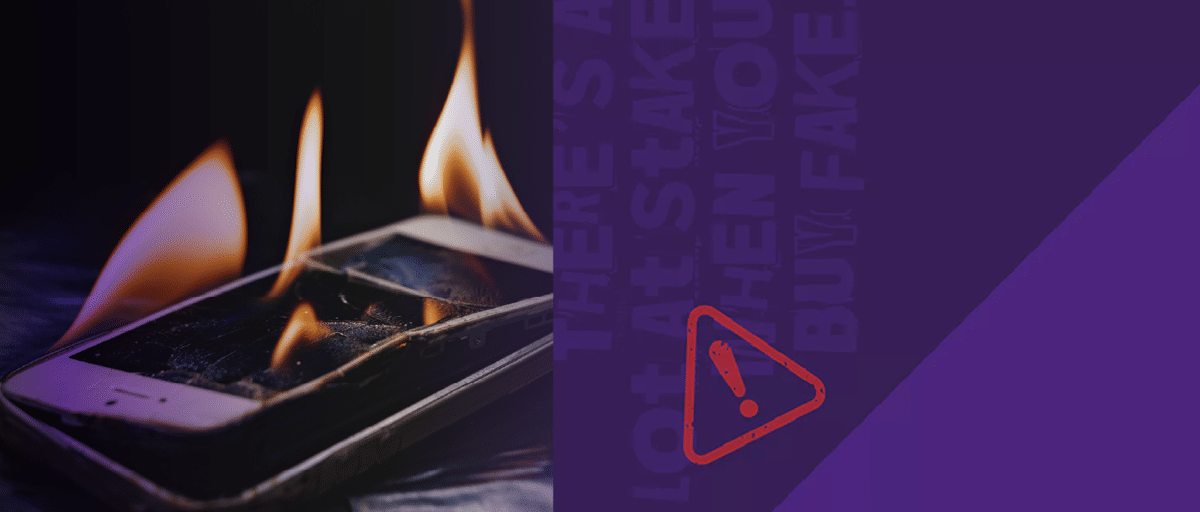Don’t short-circuit safety for a bargain
It’s never a good deal.
Tempted by knock-off toys or electronics?
At first glance, buying fake toys or electronics may seem harmless.
But the reality is far from it.
You may think you’re being money-savvy, getting a good deal, and saving money in the process.
But the truth is, buying fake products hurts your wallet in the long run and can cause harm to you or your loved ones.
Fake toys and electronics are made from subpar materials and inferior craftsmanship. This means these types of products are flimsy and will often break after a few uses, so you’ll end up having to replace them more often.

Fake goods are never worth it.
When you buy these sorts of fake goods, you’re unknowingly supporting illegal and criminal activities like child labour, human trafficking, and organised crime.
Just because you know others are buying fake toys or electronics doesn’t make it right.
Fake toys can often contain toxic chemicals and are usually made with low-quality materials, which often contain loose parts or sharp edges.
Giving fake toys to children could have serious consequences and could lead to choking, burns, damage to hearing, or even strangulation.
Fake toys. Real danger.
Fake electronics likely don’t comply with manufacturing standards, and because of this, they can be prone to overheating, catching fire, causing burns, giving electric shocks, or exploding.
Genuine products always undergo rigorous testing to ensure they’re safe to use.
Fake toys and electronics do not undergo quality safety testing. When you buy or use these products, you’re putting yourself and your loved ones at risk.
Don’t fall for the spark of fake toys and electronics.
Do you know who's sourcing and selling fake goods? You can tell us what you know, and remain 100% anonymous - guaranteed. No one will ever know that you got in touch with us.
Call free on 0800 555 111, 24 hours a day, 365 days a year - or fill in our quick & easy secure online form, here on our website:
What pushes people to buy fake toys and electronics?
- The genuine product is too expensive
- Fake toys or electronics look similar to genuine products
- Keeping up with trends
- Not wanting to disappoint loved ones
- Convenience: getting a fake is often quicker
How to spot fake toys and electronics
Before buying:
- Low price
An incredibly low price is the most common giveaway. If it looks too good to be true, that’s because it probably is. - Product listing
Does the product listing use high-quality or low-quality imaging? Are there spelling mistakes in the listing? - Look at reviews
Read through reviews of the seller and the products they sell. Check to see if they have a track record of selling toys or electronics. If not, be wary. - Dodgy websites and unusual places of sale
Untrusted websites and less well-known outlets are hotbeds for criminals selling fake goods. If someone is selling products off the back of a van in a pub or club, it most likely isn’t real.
When your package arrives:
- Packaging
Look at the packaging. Does it look genuine? Is the spelling correct? Are warnings and labels in the correct language? - Safety label
Check for the UK Conformity Assessed (UKCA) or CE (Conformité Européenne) safety certification label. If you can’t see this, it’s highly likely that the product is fake.
- Age labelling and warnings on toys
Ensure that the labelling of the toy is appropriate for the age of the child that it is for. Also, check for relevant warnings. For example, toys for babies should clearly state “not suitable for under 3’s”.
As an independent charity, we keep you 100% anonymous - so you’ll never have to worry about anyone finding out you’ve spoken to us.
Contact us by phone or online, here on our website. Call free on 0800 555 111 or give information online:
Give information anonymously
12 October 2023
